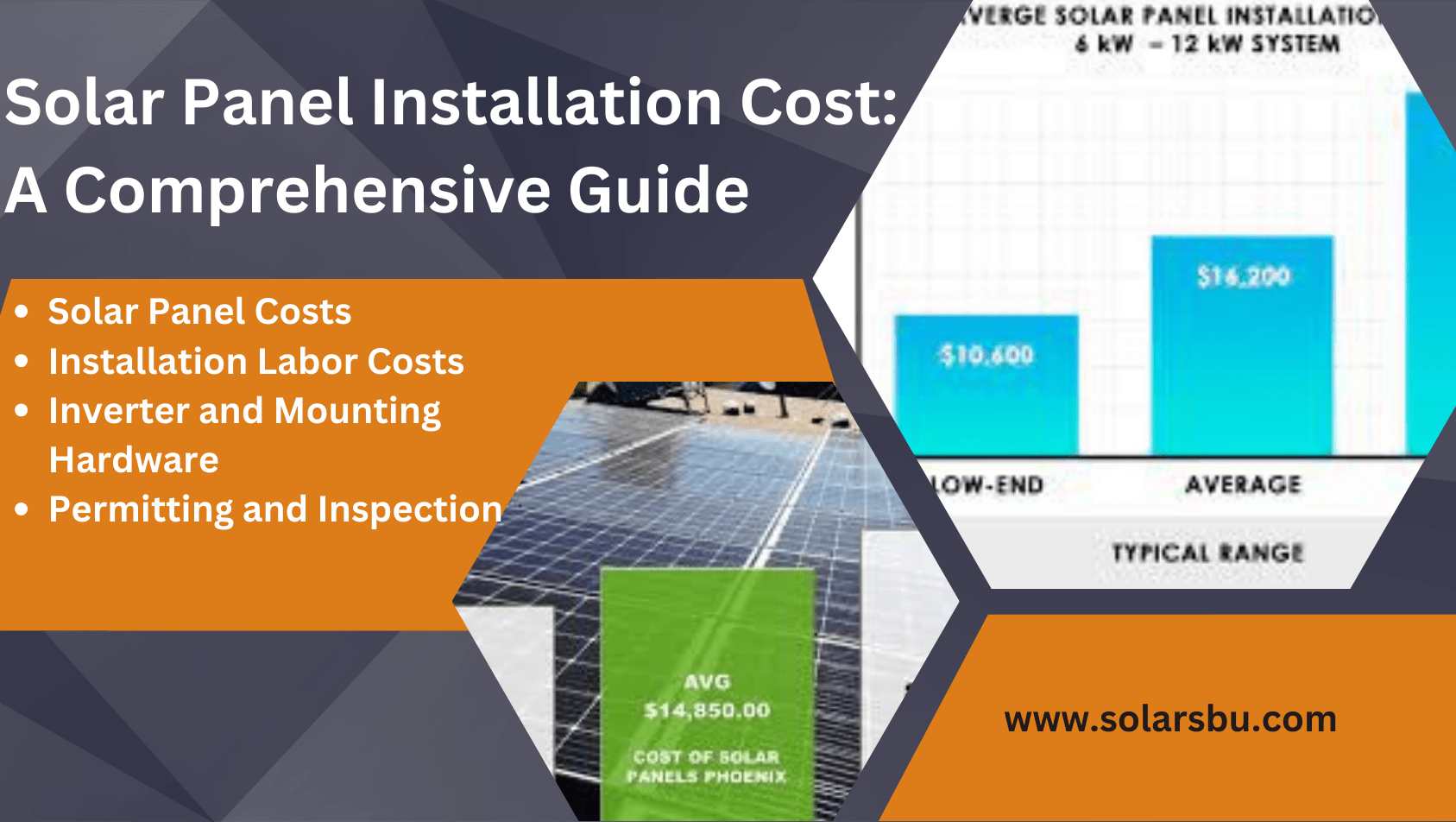Solar Panel Installation Cost: A Comprehensive Guide
In today’s rapidly evolving world, the push for sustainable energy sources has never been more prominent. Solar energy stands at the forefront of this movement, offering an eco-friendly and cost-effective solution to power our homes and businesses. As an environmentally conscious and forward-thinking individual or organization, you might be considering harnessing the power of the sun by installing solar panels. However, one crucial aspect that often looms large in the decision-making process is the cost of solar panel installation.
At [Your Company Name], we understand that the financial aspect of transitioning to solar energy can be a significant concern. That’s why we’re here to provide you with a comprehensive guide to solar panel installation costs, shedding light on the intricacies and factors that determine the expenses involved.
Understanding Solar Panel Installation Costs
Before delving into specific figures, it’s essential to grasp the factors that contribute to the cost of solar panel installation. By doing so, you’ll have a clearer picture of what to expect and how to make an informed decision.
1. Type and Quality of Solar Panels
Solar panels come in various types and qualities, each with its unique price point. The most common types are monocrystalline, polycrystalline, and thin-film solar panels. Monocrystalline panels tend to be the most efficient but also the most expensive, while thin-film panels are less efficient but more budget-friendly. The choice of panel type greatly impacts your overall installation cost.
2. System Size
The size of the solar panel system you require will naturally influence the cost. Larger systems generate more electricity but come with higher upfront expenses. Your energy consumption and space available for installation will determine the ideal system size for your needs.
3. Location
Geographical location plays a pivotal role in solar panel installation costs. Areas with abundant sunlight and favorable weather conditions are generally more conducive to solar energy production. However, the cost of installation can vary significantly depending on your location’s accessibility and local regulations.
4. Incentives and Rebates
Government incentives and rebates can substantially reduce the cost of installing solar panels. These programs are designed to promote clean energy adoption and make it more financially viable for homeowners and businesses. Be sure to research available incentives in your area to maximize savings.
5. Installation Complexity
The complexity of your installation project can affect the overall cost. Roof-mounted systems are often more straightforward to install, while ground-mounted or tracking systems may require additional work and incur higher expenses.
Breaking Down the Costs
Now that we’ve covered the key factors influencing solar panel installation costs, let’s delve into the specifics. Please note that these figures are approximate and can vary based on the factors mentioned earlier.

1. Solar Panel Costs
On average, the cost of solar panels can range from $2 to $4 per watt. For a standard 6 kW residential system, this translates to an initial investment of approximately $12,000 to $24,000.
2. Installation Labor Costs
Labor costs typically account for 10% to 30% of the total installation cost. Depending on your location and the complexity of the installation, labor expenses may range from $1,000 to $5,000.
3. Inverter and Mounting Hardware
Inverters, which convert solar energy into usable electricity, and mounting hardware costs can vary. Budget between $1,000 to $5,000 for these essential components.
4. Permitting and Inspection
Permitting and inspection fees vary by location and can range from a few hundred to over a thousand dollars.
5. Additional Costs
Don’t forget to budget for miscellaneous expenses such as wiring, conduit, and equipment for connecting your solar system to the electrical grid. These costs can add another $1,000 to $3,000 to your overall expenses.
Financing Options
Understanding the costs is essential, but it’s equally important to explore financing options to make your transition to solar energy as smooth as possible.
1. Solar Loans
Many financial institutions offer specialized solar loans with favorable terms and interest rates, making it easier to finance your solar panel installation.
2. Solar Leasing
Solar leasing allows you to install solar panels on your property without the upfront cost. Instead, you pay a monthly lease fee. While this option may not provide as much long-term savings, it’s an accessible entry point for many.
3. Power Purchase Agreements (PPAs)
PPAs involve a third party installing and maintaining solar panels on your property. In exchange, you purchase the electricity generated at a reduced rate compared to your local utility.
Conclusion
In conclusion, the cost of solar panel installation can vary widely based on several factors, including the type of panels, system size, location, and available incentives. It’s crucial to conduct thorough research, obtain multiple quotes, and explore financing options to make an informed decision that aligns with your budget and sustainability goals.
At [Your Company Name], we are committed to helping you navigate the complexities of solar panel installation and providing cost-effective solutions tailored to your unique needs. Our team of experts is ready to assist you on your journey towards harnessing the power of the sun.

